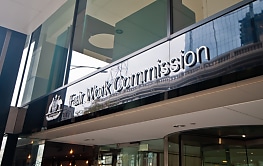
As salaries within private practice rise “across the board”, mid-tier firms will need to focus on their culture, career pathways, and wellbeing initiatives if they are unable to match top-tier pay — or risk losing staff.
Following reports in the United Kingdom of salaries at mid-tier firms rising to compete with top-tier firms, Lawyers Weekly spoke to four legal professionals about whether this might be a trend within the Australian market, too.
Director of Burgess Paluch, Paul Burgess, said that salaries have, in fact, already risen within mid-tier firms.
“Mid-tier firms have been working hard to match it with their larger competitors and have become much more aggressive with offers over the last six months. While many of them still lag behind the top-tier, some have cut the margin,” he said.
“Salaries have risen across the board for lawyers and have possibly peaked for the time being. Current local and global macro-economic conditions will likely limit major increases for the time being.”
Partner at legal recruitment firm Empire Group, Alison Crowther, agreed that salaries have risen throughout the profession.
“How we deal with this will be the question as firms struggle to make sense of paying lawyers at higher rates than they can charge them out. I don’t see this as a mid-tier only issue. As recruiters, we need to remind candidates that the higher the salary the higher the expectations,” she said.
“This is an issue across the board as salaries increase. The hours expected as well as the expectation to strive for a balance are contradictory. If candidates seek a higher salary as a way of reaching balance, I don’t see that as sustainable. There is a greater conversation that could occur to find a way forward. I think in the interim everyone is just moving forward and hoping that it all works out.”
This can also be seen within some mid-tier firms already matching lower banding of top-tier firms, according to Taylor Root partner and head of Australia Hayden Gordine.
“We have already witnessed some mid-tier firms matching the lower banding of the top tier firms. We first witnessed this last year across the corporate and banking practices as the mid-tier fought to retain talent that the top tier was targeting,” he said.
“As 2022 progressed, and the mid-tier became more of a target for the top-tier across all practices, we witnessed more and more mid-tier firms matching the lower banding of the top tier across all practice’s groups.”
Naiman Clarke Legal managing director Elvira Naiman said that with salaries already having risen over the last year, there might not be much more room for them to rise further.
“Salaries are a factor of an elaborate equation in most law firms; budgets, hourly rates, expectations of hourly billables per day/year, write offs etc and ultimately what the law firm’s client base will bear as an hourly dollar rate for partners and lawyers. When this equation goes off kilter ultimately partner profits get hit,” she said.
“It’s a very large issue. Many mid-tier firms are reluctant to have to increase expected billables for each lawyer by an extra hour or two per day to deal with salary increases. Ultimately law is a business, so the numbers across the board need to make sense. As fixed costs increase (a permanent salary being a fixed cost) and with many law firm expenses being fixed; like rent and subscriptions — but the variable costs will need to be tinkered with. Bonuses are generally a variable cost — so that may end up being where the additional salary costs come from.”
Particularly with more candidates now placing more emphasis on work/life balance, mental wellbeing and flexibility, mid-tier firms need to focus not only on salary increases but also on retention initiatives, too.
“To succeed in this war for talent, mid-tier law firms will need to focus as much on these issues as on compensation levels to attract and retain staff. Quality of work and quality of life is very important for the associate’s generation of lawyers which one of our international law clients rightly recognises. They feel they have the quality of work of the top tier but without the hours, they would prefer to hire three for every two at the top tier to ensure associates have a life outside of office. It is an attractive proposition to be taking to the market from a recruitment and attraction perspective,” Mr Gordine explained.
“The number of newly admitted solicitors seeking graduate positions still outnumber opportunities so I see no reason why mid-tier firms should be forced to raise starting salaries. Unfortunately, the mid-tier has less of a luxury once an associate has one- or two-years’ experience however as their value to the market (other law firms) dramatically increases.”
Whilst “benefits are critical”, Ms Crowther said that mid-tier firms “have, and will continue to” increase their starting salaries in line with top-tier firms.
“Attraction is hard but retention is harder, firms need to work to make sure people are in the right roles and that they are being developed and there are fresh and innovative solutions to the balance they can reach,” she added.
“I don’t see a huge gap at the senior end and juniors that are suitable for top-tier are not necessarily looking at mid-tier. I have seen an increase in benefits such as mat leave from the mid tiers to [complement] and complete what is being offered by the top tiers.”
Moreover, mid-tier firms will have to be very competitive moving forward to fill key roles, according to Mr Burgess, who said this applies to roles in “front-end transactional areas” in particular.
“[Mid-tier firms] have been increasing salaries, offering sign-on bonuses and generous relocation packages, traditionally more normal from top-tier firms. They are also focusing on the whole package they can deliver, highlighting the relative ease of promotion, better work/life balance and lower budgets. A focus on lifestyle and culture is their natural selling point,” he explained.
“They have been raising salaries significantly for experienced lawyers and this is flowing through to all levels. They may not match it with the top-tiers, but they are trying to close the gap where possible.”
Moving forward, mid-tier firms will be able to retain lawyers who value culture, flexibility and their career path, Ms Naiman added.
“Some mid-tier firms won’t necessarily be able to compete for every candidate as there will definitely be a proportion of the market which is happy to work 1800+ hours a year (7.2-7.8 billable a day or more) and be paid top of market salary accordingly. But some of the softer factors around promotion capability, being able to enjoy other aspects of your life outside of work and possibly other ways that staff can feel appreciated and nurtured; extra leave, opportunity to pursue interests outside of law and other initiatives that don’t involve top of market salaries, might be able to be employed,” she said.
“The important thing for lawyers to note is salaries go up and they go down. During the global financial crisis, salaries went backwards in real terms and there was a ‘market correction in relation to lawyer salaries’, that may or may not happen in this cycle. Having the highest salary at your level at a firm can sometimes be a dangerous place to be at when the market turns.”
This article was originally featured on 20 Sept 2022 in Lawyers Weekly
Shandel McAuliffe
Shandel has recently returned to Australia after working in the UK for eight years. Shandel's experience in the UK included over three years at the CIPD in their marketing, marcomms and events teams, followed by two plus years with The Adecco Group UK&I in marketing, PR, internal comms and project management. Cementing Shandel's experience in the HR industry, she was the head of content for Cezanne HR, a full-lifecycle HR software solution, for the two years prior to her return to Australia.
Shandel has previous experience as a copy writer, proofreader and copy editor, and a keen interest in HR, leadership and psychology. She's excited to be at the helm of HR Leader as its editor, bringing new and innovative ideas to the publication's audience, drawing on her time overseas and learning from experts closer to home in Australia.










